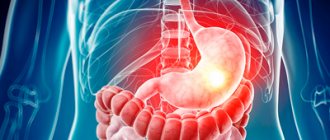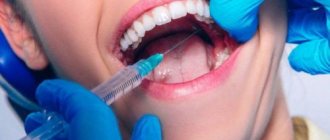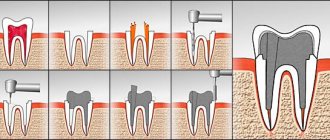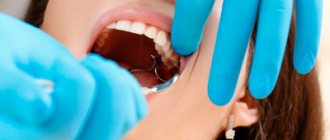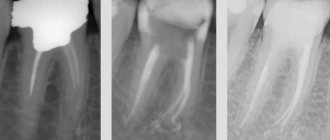05.12.2019
A huge number of people are afraid to visit dentists because dental treatment is usually accompanied by pain and other unpleasant sensations. There is even a special term - dentophobia - fear of dentists, which, according to some data, can describe 84% of patients. However, nowadays, anesthesia comes to the aid of dental phobes, facilitating a calm dental procedure.
But people are usually concerned about how long the freezing effect lasts and how to quickly recover from dental anesthesia, because it can interfere with eating or distort your smile.
Classification of anesthesia in dentistry
Anesthesia, or anesthesia, in dentistry has a certain classification. Various drugs and their types are used in individual cases, depending on the time required by the doctor for the operation, the patient’s condition, and the presence of severe fear or phobia. First of all, anesthesia is divided into two types:
- general anesthesia, or anesthesia;
- local anesthesia.
Anesthesia is usually used only in isolated cases of necessity, if the operation is expected to be very long. So, general anesthesia can last about six hours. Moreover, it has a number of advantages relative to local anesthesia:
- you can remove several teeth or perform several procedures in one go;
- Treatment under general anesthesia is completely painless;
- During anesthesia, the secretion of saliva is blocked, which is very beneficial to the doctor.
However, in most cases there is simply no need for anesthesia, so local anesthesia is used, which is often popularly called tooth freezing.
Features of local anesthesia
Local anesthesia is simple and in most cases can satisfy the need for pain relief, which is why it is especially popular among dentists. In turn, tooth freezing is divided into the following types:
Application anesthesia
It is carried out using gels or sprays that are applied to the gum or cheek. The effect can be observed approximately five minutes after application. However, topical anesthesia is used only in cases where it is necessary to get rid of tartar, remove a falling out or loose tooth, treat gums, or carry out another practically painless procedure, because the spray or gel freezes only the surface of the mucous membrane.
Moreover, topical anesthesia cannot be used for children under five years of age, as well as people with lung diseases.
Infiltration anesthesia, or injection
This type of anesthesia is performed by injecting an anesthetic into the soft tissue located near the diseased tooth to freeze it. It affects the deep layers of tissue. The injection is administered near the location of the entrance of the nerve trunks leading to half of the jaw or its separate part. Usually, not only the cheek and the necessary gums are frozen, but also other organs of the oral cavity, since the exits of all nerves are located close to each other.
It is also important to understand that freezing the upper and lower jaws are somewhat different in their methodology and action due to differences in the structure of the skeleton. Considering that the lower jaw usually has greater loads relative to the upper jaw, evolutionarily it has developed that it has a more dense structure and its muscles are more developed.
Therefore, when injecting an anesthetic into the lower jaw, the needle is inserted deeper, which also affects the duration of the anesthetic.
Signs of Heat Stroke
If heat exhaustion cannot be recognized, even more dangerous symptoms appear that characterize heat stroke:
- temperature rise to 39-40 0C or more;
- difficulty breathing;
- severe vomiting;
- ari nervous activity.
This condition can cause serious damage to organs (especially the heart and kidneys). Help must be provided quickly - and it is advisable not to miss thermal exhaustion, in which it is much easier to help a person.
Duration of action of the anesthetic
A huge number of patients are usually interested in how quickly tooth frost will go away, but it is necessary to understand that the duration of action of the anesthetic depends not only on the type of anesthesia, the area of its application, dosage, the person’s age, metabolic rate and other individual parameters, but also on the painkiller used facilities. Thus, dental anesthetics can be divided into three groups according to the duration of their effect:
- short-acting (Novocaine) – up to twenty minutes;
- medium-acting (Prilocaine, Articaine, Trimecaine, Lidocaine) - from half an hour to an hour;
- long-acting (Bupivacaine) - the effect in some cases can last up to six hours, but usually a sensitivity-blocking dosage is used for two hours.
However, as mentioned above, there are a number of factors that influence the duration of action of the painkiller:
- the presence of inflammation at the site of drug administration;
- the presence of vasoconstrictors in the composition of the anesthetic - substances that narrow blood vessels;
- injection depth;
- site of drug administration;
- chronic diseases of the urinary system;
- individual parameters of the human body.
But in most cases, drugs when injected into the upper jaw last for the next two hours, and when injected into the lower jaw - up to four. However, again, this all depends on the freezing method and many other factors, so if the anesthesia persists for a longer period of time, there is no cause for concern.
Only if freezing remains relevant even after 24 hours should you consult your doctor.
Tooth pain after filling in questions and answers
Question: Can a tooth hurt after filling?
Answer:
Yes, especially after depulpation. This is not always a sign of complications, but it is worth seeing a doctor.
Question: What to do after filling a tooth?
Answer:
Follow the doctor’s recommendations and do not subject the treated tooth to heavy loads in the first days.
Question: How long does a tooth hurt after filling (classic)?
Answer:
If your tooth hurts severely for more than a day or two after getting a filling, tell your dentist as soon as possible.
Question: How long does a tooth hurt after root canal filling?
Answer:
In the absence of complications, a period of one to three days is considered normal (excluding severe throbbing pain). If your tooth hurts a week after filling (even if the pain is not too severe), be sure to consult a doctor.
Question: Is it normal to have tooth sensitivity after filling?
Answer:
After therapeutic manipulations, the sensitivity of the tooth may increase, but if after filling the tooth reacts to cold and hot with excessive pain, consult a doctor.
Question: How much can you not eat after filling a tooth with a light filling?
Answer:
It is not recommended to eat food within 1–2 hours.
Question: Why does a tooth hurt after filling when pressed?
Answer:
If there are complications in the form of inflammation and damage to tooth tissue, any mechanical impact will not cause the most pleasant sensations.
Question: What should I do if the tooth is swollen after filling?
Method for reducing the effect of anesthesia
Usually, even after an operation or a procedure requiring anesthesia, the painkiller continues to make itself felt: the lips remain numb, it is not possible to eat normally, the smile becomes distorted. Therefore, people are looking for a way to help the anesthetic stop working as quickly as possible.
In this case, dentists usually recommend applying warm compresses to the cheek. This will help dilate the blood vessels, which will ultimately increase the metabolic rate and remove the anesthetic from the body. However, this is contraindicated after tooth extraction or if inflammation remains. Thus, it is strictly forbidden to heat a tooth or cheek during gumboil. Therefore, it is highly recommended that you consult your dentist initially.
Why does a tooth hurt after root canal filling?
| Type of complication | Description | Pain symptoms |
| Root perforation | As a rule, this happens when installing a pin into root canals, when its tip breaks through the root walls and rests on the bone tissue. The patient requires quite complex rehabilitation, otherwise there is a high probability of developing an infection. | Severe aching pain that can extend beyond the tooth. |
| Underfilling | A cavity remains in the root canals, which is not filled with filling material. This can lead to inflammation and abscesses. | A slight aching pain in the early stages and a strong (sometimes throbbing) pain as complications develop. Often after filling a tooth, the gums hurt. |
| Resealing | The material is planted too deep beyond the root tip. If its amount is insignificant, then over time it can resolve on its own. In more serious situations, resection of the root apex is required. | Prolonged aching pain up to neuralgia. |
| Fragments of tools in channels | A common medical mistake is when a piece of instrument remains inside the root canals. | From aching to sharp piercing pain when biting. If, after canal filling, it hurts to press on a tooth, this may also be one of the characteristic signs. |
When, after removing the nerve and filling, the tooth hurts during the first two to three days and the pain is pronounced, tell your dentist about it. In some cases, a quick response to the problem will help avoid serious complications.
Anesthesia during pregnancy
Typically, dentists recommend treating teeth and gums while planning pregnancy, because anesthetics can indirectly affect the intrauterine development of the fetus. However, if necessary, it is better to go to the doctor in the second trimester of pregnancy, but if there is an urgent need for treatment, then it can be performed at any stage.
The most modern painkillers, which do not contain adrenaline, are used for pregnant women to avoid the possibility of increased blood pressure and contractions of the uterus. Usually, drugs with minimal toxic effects on the body are also used.
In some cases, pregnant women are transferred to a hospital for treatment.
Thus, all necessary procedures can be carried out under the strict supervision of the attending physician to avoid any complications.
Tooth freezing while breastfeeding
Some mothers are afraid to visit dentists while breastfeeding, thinking that anesthetics through milk can have a negative effect on their children. However, there is practically no reason for this.
Neither the anesthetic itself nor the accompanying possible toxic substances are reflected in the milk, because they act only on a certain area of the jaw and are not introduced into the blood.
But in order to further reduce the likelihood of negative effects of drugs on babies, dentists recommend feeding them before visiting the doctor, and also preparing in advance the required amount of milk for the next feeding of the baby. Thus, the toxic substance will not have the opportunity to enter the child’s body.
Category Miscellaneous Published by Mister dentist



